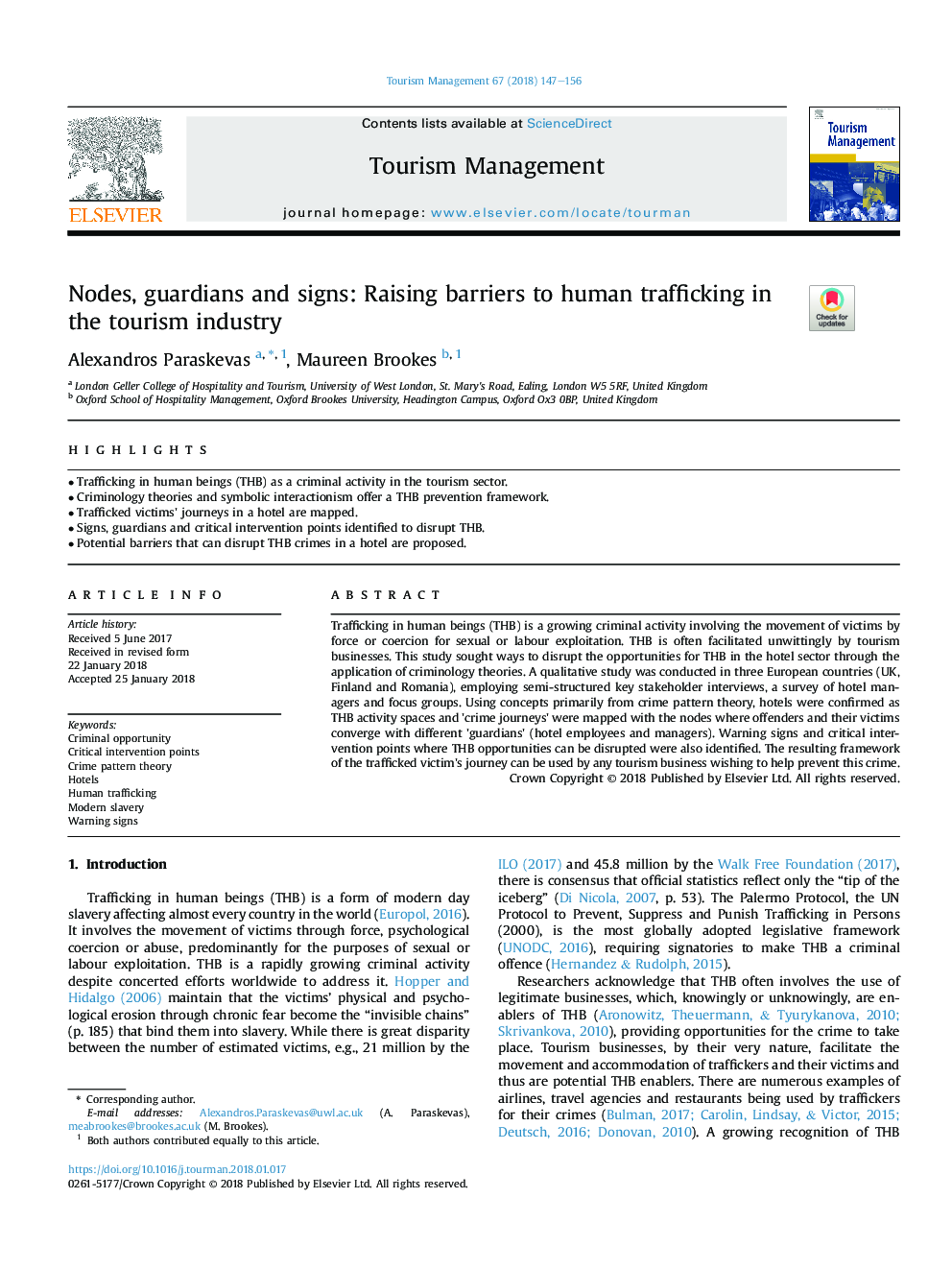| Article ID | Journal | Published Year | Pages | File Type |
|---|---|---|---|---|
| 7420961 | Tourism Management | 2018 | 10 Pages |
Abstract
Trafficking in human beings (THB) is a growing criminal activity involving the movement of victims by force or coercion for sexual or labour exploitation. THB is often facilitated unwittingly by tourism businesses. This study sought ways to disrupt the opportunities for THB in the hotel sector through the application of criminology theories. A qualitative study was conducted in three European countries (UK, Finland and Romania), employing semi-structured key stakeholder interviews, a survey of hotel managers and focus groups. Using concepts primarily from crime pattern theory, hotels were confirmed as THB activity spaces and 'crime journeys' were mapped with the nodes where offenders and their victims converge with different 'guardians' (hotel employees and managers). Warning signs and critical intervention points where THB opportunities can be disrupted were also identified. The resulting framework of the trafficked victim's journey can be used by any tourism business wishing to help prevent this crime.
Related Topics
Social Sciences and Humanities
Business, Management and Accounting
Strategy and Management
Authors
Alexandros Paraskevas, Maureen Brookes,
